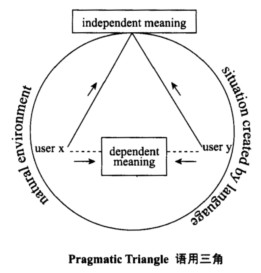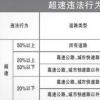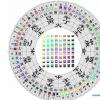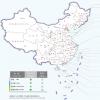What does pragmatics study?How does it differ from
What does pragmatics study?How does it differ from traditional semantics? 语用学是研究什么的?它和传统语义学有何不同?
请帮忙给出正确答案和分析,谢谢!
参考解答
正确答案:Pragmatics studies how meaning is conveyed in the process of communication.It is a comparatively new branch of study in the area of linguistics;its development and establishment in the 1960s and 1970s resulted mainly from the expansion of the study of linguisticsespecially that of semantics.Generally.it deals with how speakers of a language use sentences to effect successful communication.The scope of pragmatic study includes speech act theorycontextconversation implicaturepresuppositionetc. The basic difference between pragmatics and traditional semantics is that pragmatics considers meaning in context and traditional semantics studies meaning in isolation from the context of use.It may be said that pragmatics studies the meaning that is not accounted by semantics.It can also be expressed in the formula:pragmatics=meaning-semantics.G.Leechin his Principles of Pragmatics holds that:“Semantics answers the question:What does X mean?Pragmatics answers the question:What did you mean by X?” The following diagram demonstrates the scope of pragmatics.Specificallythe box outside the circle is the actual sentence given by language users.This meaning is independent because the sentence is understood universally the same.Its meaning is stable or frozennot to be changed in any way once uttered.The circle represents the spatio—temporal existence in which the language users communicate.The box inside the circle is the real purpose of the communicationaffected by several factors.This meaning is elusive(by dotted line)changeable all the time according to different users in different situations.It is the focus of pragmatics. 语用学研究如何在交际过程中表达意义。语用学是上个世纪60、70年代兴起的语言学的一个新的分支主要由语言学研究的深入特别是语义学发展而来。它所研究的是语言使用者如何使用语言进行成功有效的交际。语用学的研究范围有:言语行为、语境、会话含义、预设等。语用学和传统语义学的根本不同是语用学在语境中考虑意义而传统语义学研究意义时丝毫不考虑语境。可以这么说语用学研究语义学没有关注的意义。也可以用这样一个公式表达:语用学=意义-语义学。引G.利奇的话说:“语义学研究的句子意义是回答:X表达什么意义?语用学研究的话语意义是回答:你说X想表达什么意义?”上图表示了语用学的研究领域。圆上方的框里是“独立意义”也就是语言使用者道出的实际句子它一成不变意思固定。语言使用者X和Y始终在圆圈里交流。圆圈表示交流者所处的环境包括语言造成的和自然的环境。圆里的方框是交流者的真正目的但它的意义不固定因人而变因环境而变。语义学关注的是圆外的那个方框而语用学关注的是圆里的方框。
语用学研究如何在交际过程中表达意义。语用学是上个世纪60、70年代兴起的语言学的一个新的分支主要由语言学研究的深入特别是语义学发展而来。它所研究的是语言使用者如何使用语言进行成功有效的交际。语用学的研究范围有:言语行为、语境、会话含义、预设等。语用学和传统语义学的根本不同是语用学在语境中考虑意义而传统语义学研究意义时丝毫不考虑语境。可以这么说语用学研究语义学没有关注的意义。也可以用这样一个公式表达:语用学=意义-语义学。引G.利奇的话说:“语义学研究的句子意义是回答:X表达什么意义?语用学研究的话语意义是回答:你说X想表达什么意义?”上图表示了语用学的研究领域。圆上方的框里是“独立意义”也就是语言使用者道出的实际句子它一成不变意思固定。语言使用者X和Y始终在圆圈里交流。圆圈表示交流者所处的环境包括语言造成的和自然的环境。圆里的方框是交流者的真正目的但它的意义不固定因人而变因环境而变。语义学关注的是圆外的那个方框而语用学关注的是圆里的方框。
Pragmaticsstudieshowmeaningisconveyedintheprocessofcommunication.Itisacomparativelynewbranchofstudyintheareaoflinguistics;itsdevelopmentandestablishmentinthe1960sand1970sresultedmainlyfromtheexpansionofthestudyoflinguistics,especiallythatofsemantics.Generally.itdealswithhowspeakersofalanguageusesentencestoeffectsuccessfulcommunication.Thescopeofpragmaticstudyincludesspeechacttheory,context,conversationimplicature,presupposition,etc.Thebasicdifferencebetweenpragmaticsandtraditionalsemanticsisthatpragmaticsconsidersmeaningincontextandtraditionalsemanticsstudiesmeaninginisolationfromthecontextofuse.Itmaybesaidthatpragmaticsstudiesthemeaningthatisnotaccountedbysemantics.Itcanalsobeexpressedintheformula:pragmatics=meaning-semantics.G.Leech,inhisPrinciplesofPragmaticsholdsthat:“Semanticsanswersthequestion:WhatdoesXmean?Pragmaticsanswersthequestion:WhatdidyoumeanbyX?”Thefollowingdiagramdemonstratesthescopeofpragmatics.Specifically,theboxoutsidethecircleistheactualsentencegivenbylanguageusers.Thismeaningisindependentbecausethesentenceisunderstooduniversallythesame.Itsmeaningisstableorfrozen,nottobechangedinanywayonceuttered.Thecirclerepresentsthespatio—temporalexistenceinwhichthelanguageuserscommunicate.Theboxinsidethecircleistherealpurposeofthecommunication,affectedbyseveralfactors.Thismeaningiselusive(bydottedline),changeableallthetimeaccordingtodifferentusersindifferentsituations.Itisthefocusofpragmatics.语用学研究如何在交际过程中表达意义。语用学是上个世纪60、70年代兴起的语言学的一个新的分支,主要由语言学研究的深入,特别是语义学发展而来。它所研究的是语言使用者如何使用语言进行成功有效的交际。语用学的研究范围有:言语行为、语境、会话含义、预设等。语用学和传统语义学的根本不同是,语用学在语境中考虑意义,而传统语义学研究意义时丝毫不考虑语境。可以这么说,语用学研究语义学没有关注的意义。也可以用这样一个公式表达:语用学=意义-语义学。引G.利奇的话说:“语义学研究的句子意义是回答:X表达什么意义?语用学研究的话语意义是回答:你说X想表达什么意义?”上图表示了语用学的研究领域。圆上方的框里是“独立意义”,也就是语言使用者道出的实际句子,它一成不变,意思固定。语言使用者X和Y始终在圆圈里交流。圆圈表示交流者所处的环境,包括语言造成的和自然的环境。圆里的方框是交流者的真正目的,但它的意义不固定,因人而变,因环境而变。语义学关注的是圆外的那个方框,而语用学关注的是圆里的方框。
相似问题
Why the word order of Old English is more varied t
Why the word order of Old English is more varied than that of Modern English? 古英语的词序为何要比现代英语的词序多样化?请帮忙给出正确答案和分析,谢谢!
What is Hyponymy? 什么是下义关系?请帮忙给出正确答案和分析 谢谢!
What is Hyponymy? 什么是下义关系?请帮忙给出正确答案和分析,谢谢!
How to define sentences as a simple coordinate or
How to define sentences as a simple,coordinate or complex?Try to make use of the sentences offered to analyze. 什么是简单句
What is universal grammar? 什么是普遍语法?请帮忙给出正确答案和分析 谢谢
What is universal grammar? 什么是普遍语法?请帮忙给出正确答案和分析,谢谢!
How to understand the difference between meaning c
How to understand the difference between meaning,concept,connotation and denotation? 如何理解意义、概念、内涵、外延等相互问的区别?请帮忙给出正确答案和分析,谢谢!












